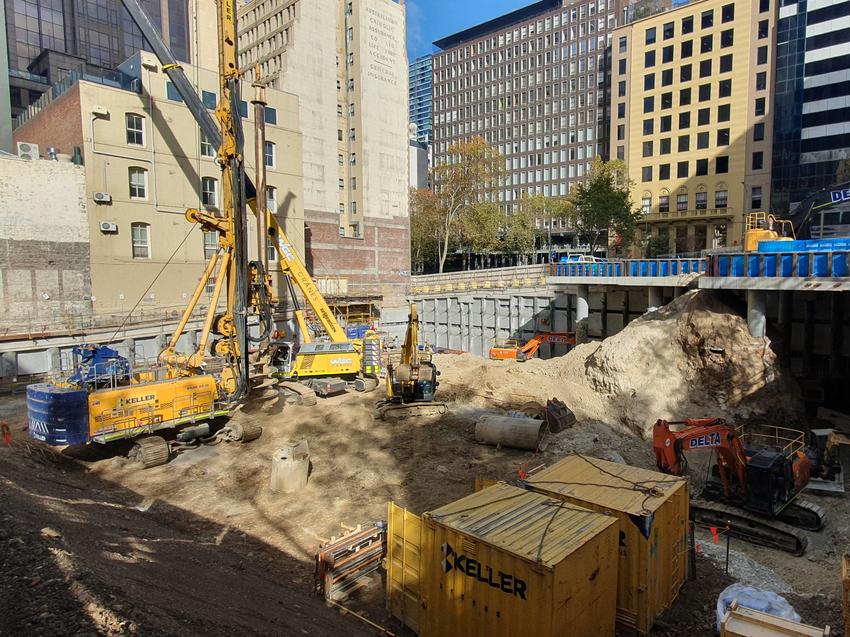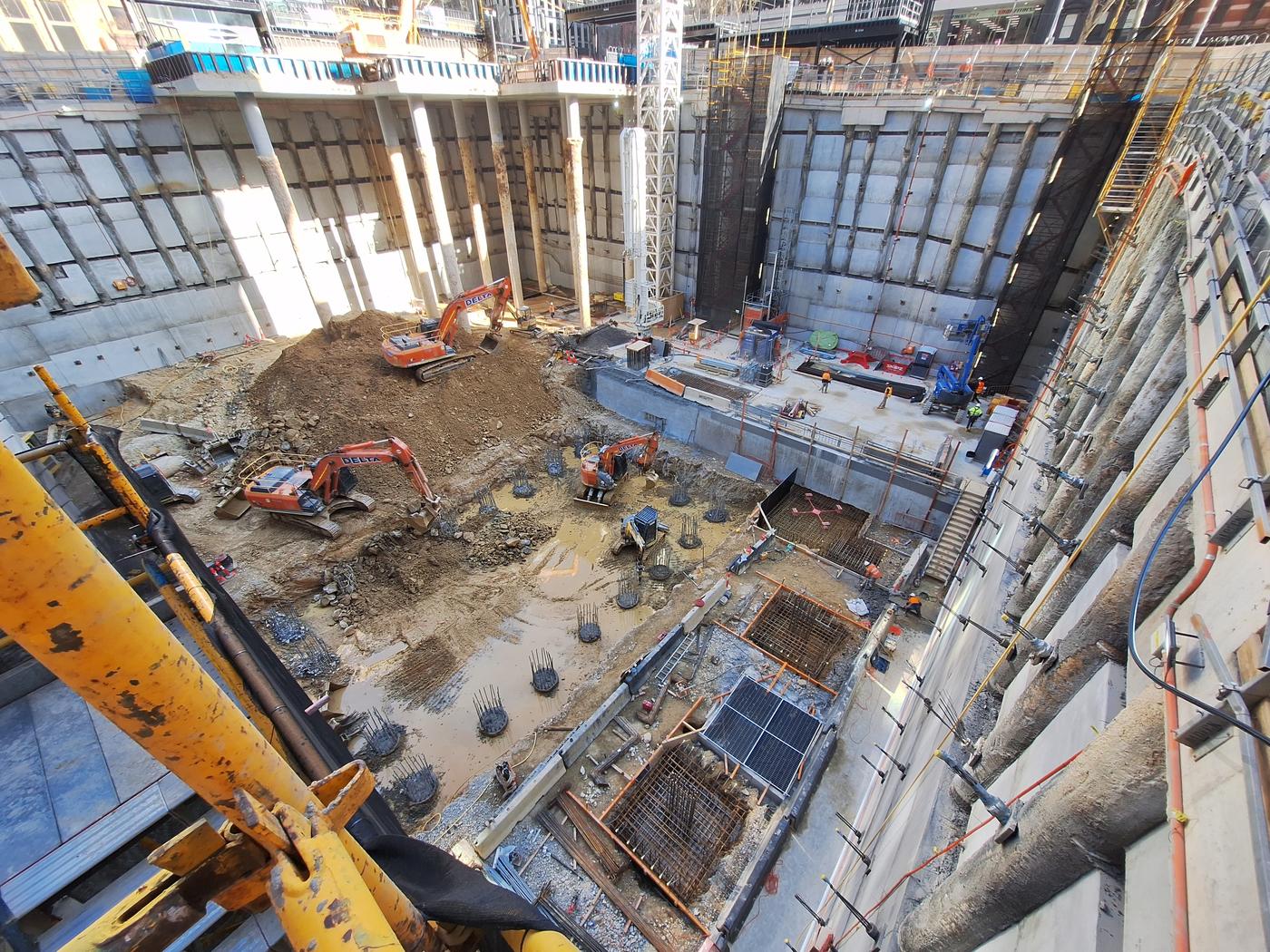Finishing ahead of schedule, Keller Australia has successfully installed foundation piles for a land

435 Bourke Street in the heart of Melbourne is one of the first office towers in the world to feature a solar facade, capable of generating 20 percent of its base electricity. The rest of the building’s energy will come from offsite renewable electricity, helping it achieve net-zero carbon emissions when in operation.
The billion-dollar building will include a six-level basement, 60,000m2 of commercial office space, 1,300m2 of retail space, and several landscaped terraces, creating what developer Cbus Property calls a ‘vertical village’.
Logistical challenges
Keller has extensive experience of constructing foundations for premium tower buildings in Melbourne and was the first choice for Delta Group, the project’s civil works contractor.
“Over the years we’ve built strong relationships with Delta and the general contractor, Multiplex,” says Sam Wong, Project Engineer. “Although the actual piling design itself wasn’t too complex, the tough ground conditions and logistical challenges meant there weren’t many contractors in Melbourne who could handle this project.”
The scope called for 20 bored piles, 1,200mm in diameter, drilled to 23m to support the building’s main structural core. These were to be installed in a small section of the site, roughly 18m by 40m, with limited access and multiple trades working alongside.
Due to the geological conditions, which included 5m of high-strength basalt, Keller needed specialist drilling equipment, using a Bauer BG30 that took up almost a third of the piling area.
“Working in the centre of the busy city, with a single access ramp and small footprint, meant we had to be extremely careful in terms of logistics, planning deliveries, removing spoil and sequencing the works to maintain high levels of quality and production.”
Ready for anything
Because it would have been too difficult to get equipment into the proposed sixth level of the basement, Keller carried out the piling from level one. However, this meant the pile cages needed to be cut short, 15m from the platform level. This left the tops of the holes at risk of collapse, a problem that would have to be resolved by filling with sand and then re-drilling. Keller planned for this, building in extra time, but thanks to careful drilling and better-than-expected ground conditions, the issue didn’t materialise.
Another potential headache was up to 12m of water encountered in each pile. This was managed by using screened rock – a cheaper, more efficient solution than stabilising sand.
Ahead of schedule
Mobilising on site on 5 May 2023, with drilling beginning five days later, the five-person crew worked in shifts to construct the piles in the fastest and most effective way, without compromising quality. While the target was a pile a day, the detailed planning meant downtime between piles was kept to a minimum, resulting in the team averaging 1.5 piles a day – much to the delight of the client. Piling was completed on 25 May, with Keller demobilising two days later.
“Any time you can deliver a high-quality job with minimum fuss, on budget and ahead of schedule, is fantastic and Delta was very happy with the results,” says Sam.
Thanks to Keller’s planning and execution, this innovative, highly sustainable and architecturally impressive tower can now start to take shape.
